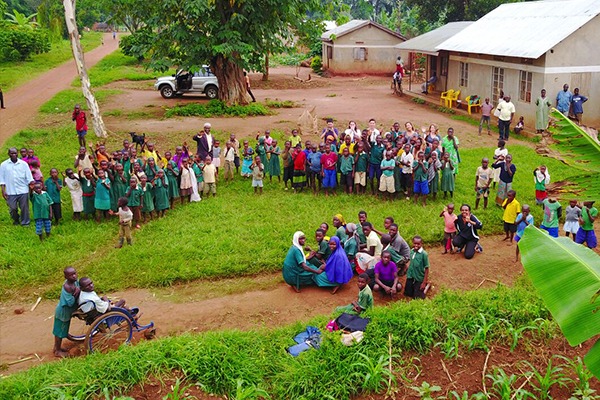CBID students spend the summer with clinicians around the world

Every summer, students from the Center for Bioengineering Innovation and Design travel to some of the world’s most underserved communities and work side by side with primary care providers. They assess patient and provider needs, and design the next generation of medical devices.
This year, four teams of students spent part of their summer in Uganda designing a triage system to identify illnesses in newborns, in India developing a new device for gastrointestinal therapeutic endoscopy procedures, in Brazil researching a new surveillance system to identify Zika vectors, and in China investigating respiratory and cardiac needs.
Each team used a blog as a way of documenting experiences and storing photos for families and friends to follow along with the group’s travels.
Students in Uganda visited health clinics and learned of the extreme need for improved maternal, obstetric, and neonatal care. They interacted with local mothers to get feedback on the usability of their prototype—a neonatal monitoring system. They met with the mayor of Iganga and listened to his priorities for improving the community.
In India, students interviewed endoscopists, clinicians, technicians, and nurses as part of their usability study. They observed a number of endoscopic retrograde cholangiopancreatography procedures and witnessed how local hospitals operate. They also experienced India’s Independence Day and visited breathtaking temples, museums, monuments, and palaces.
Students who traveled to Brazil met with health officials to get feedback on their prototype, which traps and automatically identifies mosquitoes.
In China, students met with pulmonologists, cardiologists, and electrophysiologists to obtain feedback and ideas on prototype designs. They took a high-speed train to Beijing, where they observed several bronchoscopy procedures. They also made time to visit some essential tourist destinations, such as the Forbidden City, Tiananmen Square, Jiming Temple, the Classical Gardens of Suzhou, and Shanghai Tower.
After interacting with clinicians and patients from around the world, students returned to Baltimore with fresh insights and user feedback. With this newfound knowledge, students will spend the rest of the year building upon their original designs and making necessary improvements that may one day result in new medical devices that will transform global health care.
